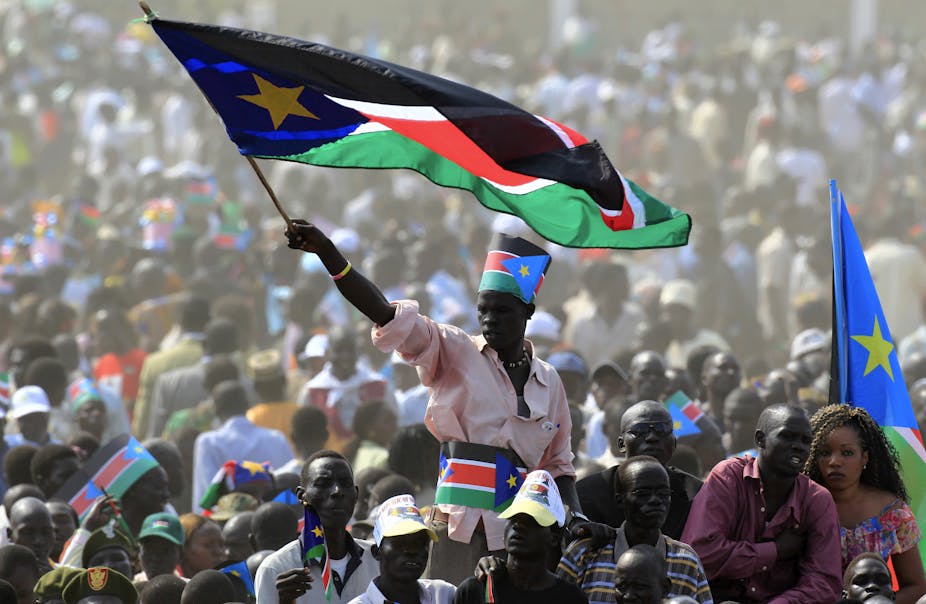After almost half a century of conflict, South Sudan attained its independence from Sudan in July 2011. One of the challenges it faces as a new country is a small and troubled higher education system.
Sudan’s three oldest public universities – Juba, Bahr el Ghazal and Upper Nile – all have their origins in southern Sudan. In the late 1980s they were relocated to Khartoum in the north. This was ostensibly done to protect students and faculty from the war. It also allowed the regime to execute the war away from the scrutiny of intellectuals. In exile the universities flourished, acquiring additional property and staff.
After the comprehensive peace agreement between the Sudan People’s Liberation Movement (SPLM) and the government of Sudan in January 2005, the return of the universities became one of the priorities of the Government of the Southern Sudan. In late 2010 the institutions were moved back south.
But the return was rancorous. The universities left behind some of their most valuable assets – experienced academics, buildings, libraries and laboratory equipment. Infrastructure was taken over by the University of Bahri in Khartoum North.
In the south, universities struggled to reestablish themselves. They needed to resettle students, recruit staff and acquire new facilities and equipment. Issues of physical infrastructure and severe staff shortages trouble the university system.
Recently renewed conflict between factions of the ruling SPLM has exacerbated the problems. The hostilities in the Upper Nile region have drastically reduced oil production, which accounts for 98% of South Sudan’s GDP. This plus the plunge in global oil prices placed serious constraints on state funding of higher education.
Still, South Sudan has five functioning public universities: the three cited above, as well as Dr John Garang Memorial University of Science and Technology and Rumbek University. Together they educate nearly 20,000 students. That is only 0.16% of the population of about 12 million. The proportion is the lowest in the region.
The resilience of South Sudan’s higher education system is due mainly to dedicated staff, institutional partnerships and supportive governance.
Dedicated staff
South Sudanese universities lost many of their staff in the 2010 move south. Juba, with 66% of the students, lost 77% of its staff – leaving it with only 137 staff members in total. Similarly large numbers of Upper Nile and Bahr el Ghazal University staff remained in Khartoum. A World Bank report in 2012, which I used for my research but which is not available online, found that only 721 faculty were employed at the southern universities. Since then staff numbers have improved. For example, Juba’s staff increased from 291 in 2014 to 574 in early 2016. Today South Sudan has a moderate student to lecturer ratio of 28:1.
The real problem is qualifications. Most faculty are under qualified. According to the same World Bank survey only 86 of all academics in South Sudan held PhDs in 2012. Only 36 faculty were full professors, while 62 were associate professors, 76 assistant professors, 242 lecturers, and 262 teaching assistants.
This is still the most educated workforce in the country. Rigorous recruitment procedures insulate the universities from the corrupt practices in the civil service. More importantly, the dedication of the academic staff to the institution is exemplary.
While universities work to overcome the staff shortage, they depend on part-time lecturers. According to Professor John Akec and Professor Samson S. Wassara, the Vice Chancellors of Juba and Bahr el Ghazal, 31% of Juba and 60% of Bahr el Ghazal lecturers were part-timers.
Productive partnerships
The universities have developed staff development programmes with each other and internationally.
In early 2011, Juba agreed to a three-year venture with the Virginia Polytechnic and Virginia State University to train staff.
Juba also signed a memorandum of understanding (MoU) with the Open University of Tanzania in August 2015 to promote distance learning.
Bahr el Ghazal entered a similar arrangement with Makerere University in Uganda and the University of Oslo in Norway. A&M University in Texas and the State University of New York signed an MoU with John Garang Memorial University in June 2010.
Some South Sudanese academics are pursuing postgraduate studies at Makerere University, the University of Zambia and the University of Zimbabwe.
Professors in other universities also supervise some of Juba’s graduate students.
Universities share the meagre facilities they have. Juba and Bahr el Ghazal, which were least affected by the conflict, support their colleagues in John Garang, Rumbek and particularly Upper Nile. The latter has moved to Juba because of insecurity in Malakal.
Supportive governance
The Ministry of Higher Education has supported the tertiary institutions through its challenges.
In addition to organising the international staff development programmes, the Ministry has improved university staff pay and given the vice-chancellors a voice in making policy.
Some of the senior officials in the ministry have an academic background. They ensure that the views of universities are taken seriously.
The vice-chancellors also draw on their connections and political insight to access resources. Members of university councils are often influential ministers or parliamentarians. In South Sudan, informality tends to yield better results than bureaucracy.
This is an edited version of an article that appeared in International Higher Education

